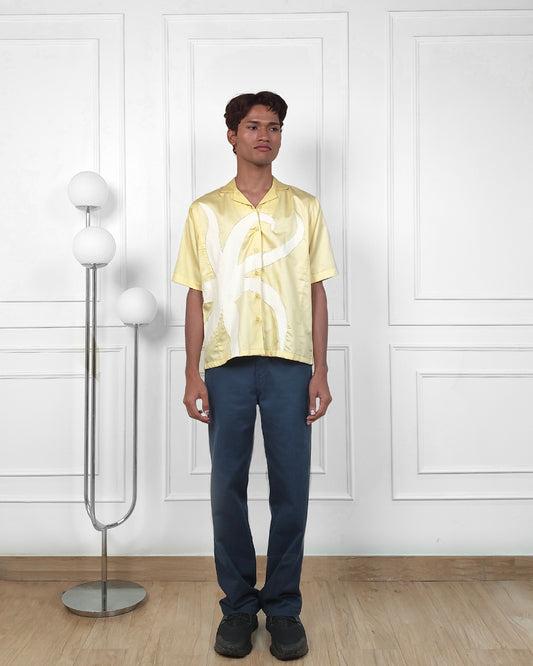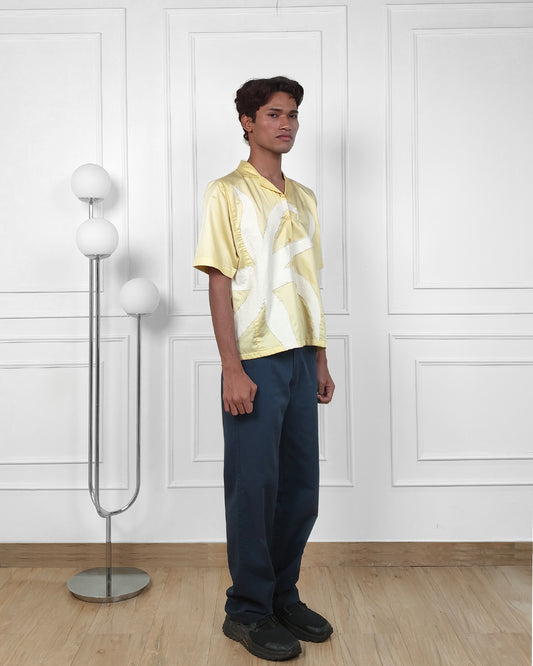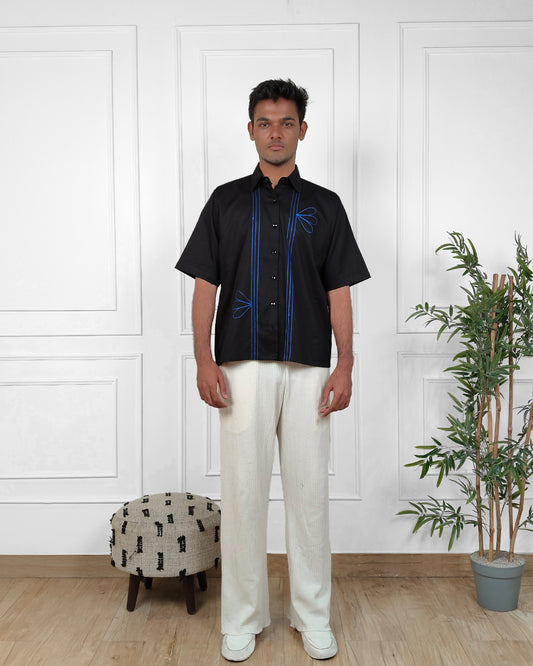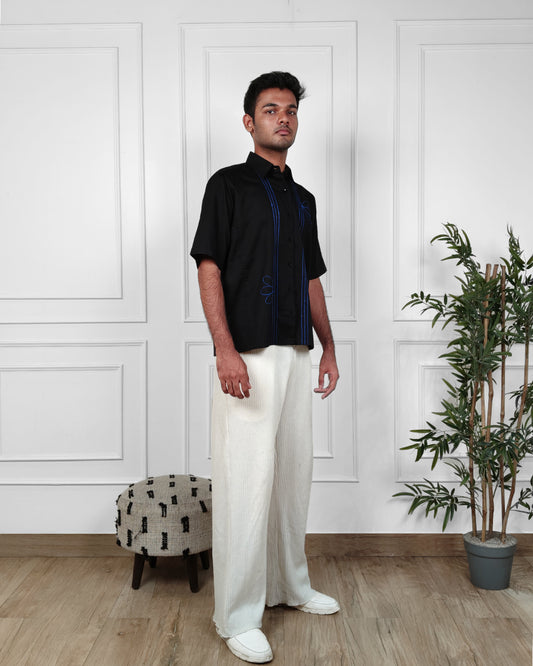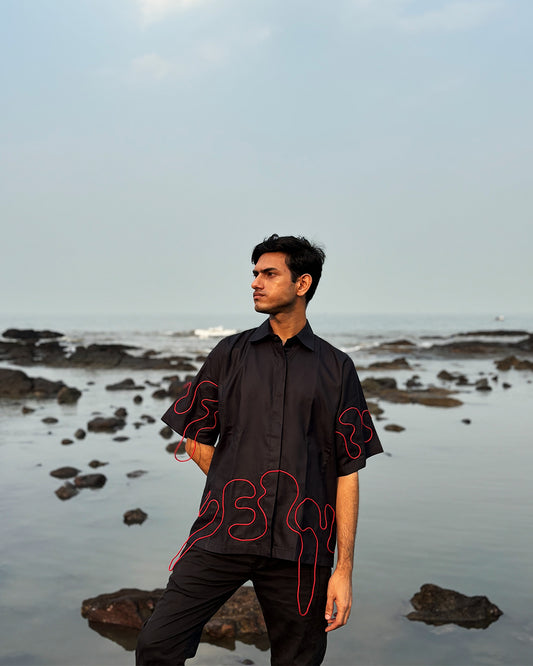
The Science Behind Zero Waste Fashion: How Design Choices Minimize Waste
Zero waste fashion is a growing movement that’s reshaping the way garments are designed, produced, and consumed. It challenges the traditional approach to fashion, where fabric waste is often a byproduct of mass production and consumption. Instead, zero waste fashion focuses on eliminating waste at every stage of the garment creation process, from the design phase to the final product. This blog explores the science behind zero waste fashion, traditional techniques that influenced modern design, and how designers are using innovation to create eco-friendly fashion that minimizes environmental impact.
What is Zero Waste Fashion?
Zero waste fashion refers to garments designed and constructed with the intention of leaving no waste behind. Unlike conventional fashion production, where fabric scraps and offcuts are discarded, zero waste fashion eliminates or repurposes fabric waste at the source.
Design Principles of Zero Waste Fashion
To understand the science behind zero waste fashion, it's important to examine the design principles that make it possible:
1. Strategic Pattern Making
The most fundamental aspect of zero waste fashion is strategic pattern making. Designers and pattern makers create garment patterns that utilize the entire width of the fabric, leaving no offcuts. In some cases, the fabric itself is designed to fit a specific garment's shape without requiring additional cutting.
- Zero waste pattern-making relies on geometric patterns that fit together like a puzzle, optimizing the use of fabric.
- Modular design incorporates smaller pieces that fit into larger areas of fabric, reducing waste.
2. Use of Sustainable Materials
Another significant design principle is the careful selection of sustainable materials. Fabrics made from organic cotton, hemp, and bamboo, for instance, are biodegradable and typically have a lower environmental footprint compared to conventional textiles. Recycled fabrics, such as those made from plastic bottles, are also becoming more common in zero waste fashion.
3. Minimalist Design
Zero waste garments often feature minimalist, functional designs with fewer seams, zippers, and buttons. This approach reduces the need for additional trims and fastenings that might otherwise contribute to waste.
Traditional Zero Waste Techniques: Inspiration from Ancient Cultures
The concept of zero waste fashion isn’t entirely modern. Many ancient cultures embraced zero waste techniques long before sustainability became a buzzword. Their designs were rooted in necessity, cultural norms, and an intimate relationship with nature.
1. The Kimono (Japan)
The Japanese kimono is one of the oldest examples of zero waste fashion. Traditionally, kimonos were designed using a single piece of fabric. The way the fabric was cut and sewn made use of every inch of material. The garment’s rectangular shape, combined with its clever folding and pleating techniques, minimized waste.
- Zero waste principles in kimono design include the use of straight lines and large rectangular cuts that reduce fabric waste when stitched together.
2. Kalidar Kurta (South Asia)
The Kalidar Kurta, a traditional garment from the Indian subcontinent, exemplifies another ancient technique for reducing waste. These kurtas often feature intricate, symmetrical designs where the fabric is used efficiently through patterns that don’t require excessive cutting.
- Kalidar kurta designs typically use the minimum amount of fabric while allowing for comfort and durability, focusing on skillful draping and tailoring.
3. The Tartan and Kilts (Scotland)
Historically, Scottish kilts were crafted from a single piece of woolen fabric, which was wrapped around the waist and fastened with a belt. This design minimized waste by creating a garment that utilized the entire fabric without unnecessary cutting.
- The efficiency of tartan weaving also contributed to minimal fabric wastage, as the patterns were designed to fit specific garment shapes.
These traditional methods provide valuable insights for modern designers looking to embrace zero waste principles in their own collections.
4. Sari, Dhoti and Lungi (South Asia)
Traditonally, draped garments like sair, dhoti and lungi were donned by the people of South Asia. These garments are still worn and many designers have contemporized them. They are all rectagular pieces of fabrics draped around the wearer, which not only maked it zero waste but also flatters each body shape by fitting the wearer to their desired style.
- Since there is not cut and sew involved in these garments, these are the most sustainable pieces known to mankind. These garments are often embellished with embroidery and can be worn for special occasions as well as daily wear.
The Impact of Zero Waste Fashion on the Environment
The environmental benefits of zero waste fashion are substantial. The fashion industry is one of the most polluting industries globally, with textile waste being a major contributor. According to the Ellen MacArthur Foundation, the global fashion industry produces 92 million tons of textile waste annually, much of which ends up in landfills or incinerators (Ellen MacArthur Foundation, 2021).
Reducing Textile Waste
By adopting zero waste design principles, fashion brands can significantly reduce the amount of fabric waste generated during production. For example, in a traditional fashion production setup, up to 15% of fabric is discarded as waste during the manufacturing process (Fletcher, 2014). Zero waste fashion eliminates much of this by utilizing every scrap of fabric.
Lower Carbon Footprint
In addition to reducing waste, zero waste fashion also contributes to a lower carbon footprint. By cutting down on overproduction and waste, the need for additional raw materials and energy consumption is minimized. According to a report by the Sustainable Apparel Coalition, the fashion industry is responsible for approximately 10% of global carbon emissions (Sustainable Apparel Coalition, 2020). Zero waste techniques can help lower this impact by promoting more mindful production and consumption.
The Benefits and Challenges of Zero Waste Fashion
Benefits of Zero Waste Fashion
- Waste Reduction: By rethinking garment design, zero waste fashion can dramatically reduce textile waste, which is one of the biggest environmental challenges in fashion.
- Innovation in Design: Zero waste challenges designers to think creatively, resulting in unique, often cutting-edge garments that push the boundaries of fashion.
- Sustainability: The use of sustainable materials and the reduction of waste help make the fashion industry more environmentally responsible.
Challenges of Zero Waste Fashion
- Design Limitations: Some designers find zero waste fashion to be restrictive in terms of creativity, as it demands very specific cuts and patterns.
- Increased Cost: Zero waste designs may require more time, labor, and specialized techniques, which can increase production costs.
- Scaling Issues: For large-scale production, maintaining zero waste principles can be challenging, especially when dealing with high volumes of garments.
Despite these challenges, zero waste fashion presents a viable solution to the sustainability issues facing the fashion industry today.
How Designers Can Bring Change: Innovation in Zero Waste Fashion
Designers are playing a crucial role in advancing the zero waste fashion movement. Through innovation, creativity, and thoughtful planning, they are showing the world that sustainable fashion doesn’t have to sacrifice style.
1. By Blending Tradition and Innovation
The rich history of ancestors can be taken as a reference and an inspiration to contemporize traditional garments, which were fully functional and did not harm the environment in anyway.
Example:
Brands like ODITE are a perfect example of this - they have modernized the Kalidar Kurta to make Zero Waste Shirts. They are presevering heritage and traditional techniques of hand-embroidery and applique by collaborating with local artisans to generate a steady source of employment as well.
2. Collaboration with Sustainable Fabric Producers
Designers are increasingly collaborating with fabric manufacturers who specialize in sustainable, recycled, or organic fabrics. By choosing sustainable materials from the outset, designers ensure that the garments they create have a smaller environmental footprint.
3. Upcycling and Repurposing Materials
Some designers are taking upcycling to the next level by using scraps from previous collections or discarded garments to create new pieces. This approach reduces waste and gives new life to materials that would otherwise be thrown away.
Example:
Patagonia, a well-known sustainable brand, has created a line of jackets made from recycled fabrics, significantly reducing their environmental impact (Patagonia, 2020).
4. Adopting Modular Designs
Modular clothing, where individual pieces of a garment can be swapped or combined to create multiple styles, is a growing trend in zero waste fashion. This approach allows consumers to reduce their overall consumption while still enjoying variety in their wardrobe.
5. Use of Advanced Software for Pattern Making
With the help of computer-aided design (CAD) software, designers can now create highly efficient, waste-reducing garment patterns. These software programs help ensure that fabric is used as efficiently as possible, resulting in minimal waste.
The Global Rise of Zero Waste Fashion
1. The United States
The United States has seen significant growth in the popularity of zero waste fashion, driven by both consumer demand for sustainable products and the growing influence of sustainable fashion designers. Brands like Stella McCartney and Everlane are leading the charge with eco-friendly collections and transparency in production.
2. The United Kingdom
In the UK, zero waste fashion is gaining momentum, especially with the rise of eco-conscious fashion weeks and initiatives like London Fashion Week’s Sustainability Hub. British designers are increasingly adopting zero waste principles, with many using fabric remnants and upcycling materials to create new collections.
3. Australia
Australia has also become a hub for sustainable fashion innovation. Designers like Kerry Lodge are pushing the boundaries of zero waste fashion with collections made from biodegradable fabrics and zero waste design principles. The country is increasingly home to eco-conscious consumers who are eager to support sustainable fashion brands.
Conclusion
Zero waste fashion is not just a trend, but a necessary shift in the way we design, produce, and consume clothing. By embracing design principles that reduce waste, using sustainable materials, and drawing inspiration from ancient techniques, the fashion industry can significantly reduce its environmental impact. Designers have an important role to play in driving innovation, and as consumers continue to demand sustainable options, the future of fashion looks increasingly waste-free.
References
- Ellen MacArthur Foundation. (2021). A new textiles economy: Redesigning fashion's future. Ellen MacArthur Foundation.
- Fletcher, K. (2014). Sustainable fashion and textiles: Design journeys. Earthscan.
- Patagonia. (2020). Patagonia’s sustainable practices. Patagonia.
- Sustainable Apparel Coalition. (2020). The sustainable apparel index: Measuring sustainability in the fashion industry. Sustainable Apparel Coalition.

